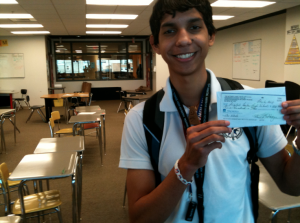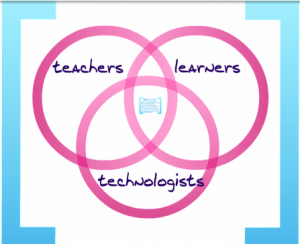In the public school system, many argue there's a disconnect between teachers, students, and technologists. Educators and students don't have enough tech training, and those who create the technology to be used in schools don't work closely enough with teachers and students. To close the loop, a newly launched program in Baltimore will bring together a network of students, technologists, and educators linking teacher professional development to student after-school programming.
Through Digital Harbor Foundation's EdTech Link program, teachers will be trained by volunteer technologists, then teach their new skills to students in after-school programs. Continuing the cycle of learner-as-teacher, students who attend the after-school program will, in turn, take their own training to educators in other schools. And volunteer technologists will get to experiment with new ideas directly by working with their users.
It's a model that Andrew Coy, co-director of the new foundation, has been piloting at Digital Harbor High School in inner-city Baltimore. Once a week after school for the past year, Coy, who's a ninth-grade technology teacher, has been taking four of his high school students to nearby Liberty Elementary School, where the students coach teachers on how to implement their one-to-one iPad program.
Students help teachers figure out how to do things like use Google forms, Khan Academy videos and dashboards, and apps like Class Dojo in the classroom. They're paid $20 per hour for their time and expertise by Liberty's principal. And although Coy says only one out of the four students has an iPad at home, they're fearless when it comes to playing around and figuring out how to use it, and showing educators too. "Kids look at things differently," Coy said. "They can download an app and figure out quickly how to use it and show teachers how to use it. And what the teachers love about it is they get to work

with these great kids and develop relationships with them. It's just a much more comfortable way to get professional development." Students have also helped with everything from I.T. support for the high school's annual scholarship fundraiser to the creation and deployment of Web sites for non-profits and startup businesses. With the EdTech Link program, students and teachers will learn everything from learning how to code to understanding the premise behind 3-D printing. And they'll participate in Startup Weekend-type events, where students conceptualize and create apps and software for classrooms with help and guidance from local programmers from local tech companies.


